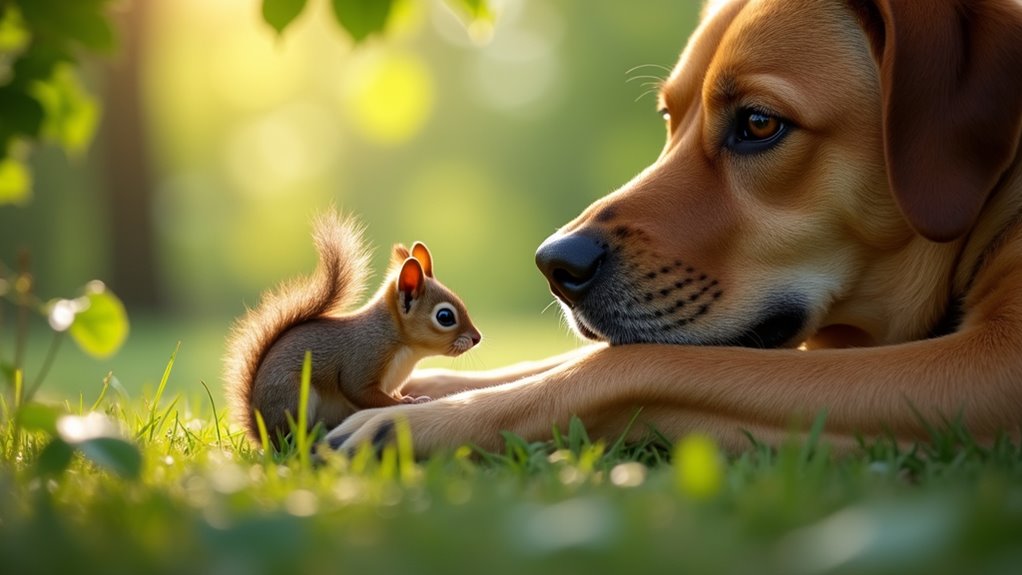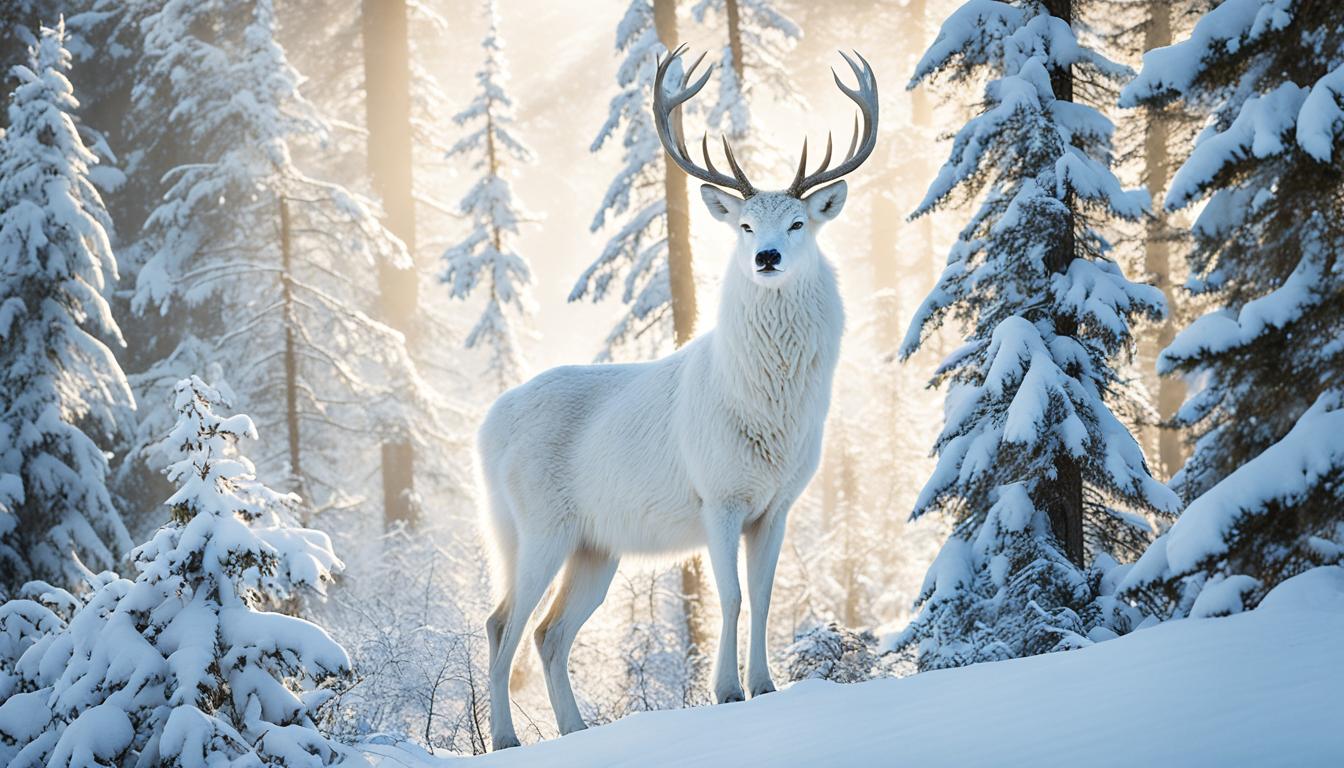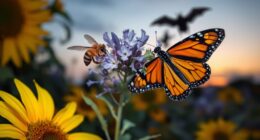Unlikely animal friendships show how animals can form surprising bonds across species boundaries, often defying natural predator-prey roles. These heartwarming connections highlight their social flexibility and capacity to overcome instinctual fears, demonstrating emotional complexity and adaptability. Such friendships can inspire us to promote coexistence and conserve diverse habitats. If you’re curious, there’s much more to discover about these remarkable bonds and what they reveal about wildlife behavior and resilience.
Key Takeaways
- Animals frequently form surprising friendships crossing species boundaries, showcasing social flexibility and behavioral adaptability.
- Cross-species bonds often overcome natural predator-prey instincts, highlighting animals’ capacity for coexistence.
- These friendships provide valuable insights into complex social behaviors and promote conservation efforts emphasizing diversity.
- Such relationships demonstrate animals’ ability for social learning, emotional connection, and overcoming natural fears.
- Heartwarming interspecies bonds can aid in animal rehabilitation, fostering peace and harmony across natural boundaries.

Sometimes, animals form friendships that surprise us, crossing species boundaries and defying natural instincts. When you observe these unlikely bonds, you’re witnessing remarkable examples of behavioral adaptability. These relationships aren’t just heartwarming stories; they also challenge what we think we understand about animal behavior and social structures. By forming connections across species, animals demonstrate flexibility in their interactions, often adapting their natural instincts to accommodate unfamiliar companions. For instance, a dog and a cheetah playing together might seem improbable, but it highlights how some animals can adjust their behavior to forge bonds outside their typical social groups.
Animals also show a surprising ability to overcome innate predator-prey relationships, which further exemplifies their behavioral flexibility. Your fascination with these friendships isn’t just about their cuteness—it also offers insights into broader conservation impacts. When animals form such unexpected ties, it can influence how we approach wildlife conservation and habitat management. These relationships often show that animals are capable of complex social behaviors, which can be harnessed to promote coexistence among species. For example, understanding that animals can adapt socially might encourage conservation strategies that emphasize habitat diversity, allowing different species to interact positively. This adaptability can lead to more resilient ecosystems where animals are less stressed and more capable of surviving in changing environments.
Furthermore, these bonds often demonstrate behavioral adaptability that defies traditional understanding, highlighting animals’ capacity for social learning. Recent studies also suggest that inter-species friendships can have positive effects on the emotional well-being of individual animals, which supports the idea that social bonds are vital for animal health. Moreover, these friendships can serve as powerful symbols for conservation efforts, inspiring communities to protect diverse species and their habitats. When you see a bird and a mammal forming a bond, it’s a reminder that animals are more than just individuals—they’re part of interconnected systems that rely on mutual tolerance and cooperation. This understanding can foster a deeper respect for wildlife, motivating efforts to preserve the environments that support such unique relationships. In turn, this can have a positive conservation impact, encouraging broader ecological awareness and community engagement.
You might also notice that these bonds often transcend the natural predator-prey or competitive relationships. Animals are capable of overcoming instinctual fears or hostility when they recognize companionship and safety. This behavioral adaptability not only reflects their emotional complexity but also suggests potential for rehabilitation and coexistence programs. For instance, animals rescued from captivity or conflict situations sometimes form unlikely friendships that facilitate their recovery and social integration. These examples underscore that, with patience and understanding, animals can learn to coexist peacefully across boundaries that once seemed insurmountable.
Frequently Asked Questions
How Do Animals From Different Species Recognize Each Other as Friends?
When animals from different species meet, they recognize each other through species recognition and social cues. You might notice that they observe body language, scent, and vocalizations to understand intentions and friendliness. These cues help them interpret signals and establish trust. By responding to these social cues, animals can form bonds despite being from different species, creating unlikely yet heartwarming friendships that showcase their ability to connect beyond their own kind.
Can These Friendships Influence Animal Behavior in the Wild?
Did you know that animals from different species can influence each other’s behavior in the wild? These friendships often strengthen communication signals and social bonding, making animals more adaptable and cooperative. When such bonds form, they can lead to changes in foraging, defense, and migration patterns. You might see a bird and a mammal working together, showcasing how cross-species friendships foster mutual understanding and impact their natural behaviors positively.
Are Such Friendships Common in Captivity or Only in Specific Cases?
You might wonder if these friendships happen often or only in specific cases. In captivity, such interspecies communication is more common because animals share a controlled environment that encourages bonding and influences shared habitat dynamics. While less frequent in the wild, some animals form unlikely friendships due to proximity and social needs. These bonds show how adaptable animals are and offer insight into their social and emotional lives beyond natural settings.
Do These Bonds Impact the Health and Well-Being of the Animals Involved?
You might wonder if these interspecies bonds affect animals’ health and happiness. They often provide emotional support, helping animals cope with stress and loneliness. Such bonds can improve interspecies communication, fostering trust and companionship. When animals form these connections, they tend to be healthier and more active, highlighting the positive impact of social interactions across species. These relationships truly benefit the animals involved, enriching their lives profoundly.
How Do Animal Trainers or Caretakers Foster Cross-Species Friendships?
Did you know that 78% of trainers say social interactions boost animal well-being? You foster cross-species friendships by carefully designing feeding routines and habitat enrichment, encouraging positive interactions. You introduce animals gradually, monitor their responses, and create shared spaces where they feel safe. By doing so, you help build trust and promote bonds, making the environment enriching and supportive for all species involved.
Conclusion
So, next time you spot a dog cuddling a duck or a cat sharing snacks with a rabbit, remember—nature’s got a wicked sense of humor. Who knew that species boundaries are just suggestions, not rules? These heartwarming bonds prove that love, friendship, and a good sense of humor can break even the toughest barriers. So, go ahead—believe in unlikely friendships. After all, if animals can do it, maybe humans should give it a try too.










